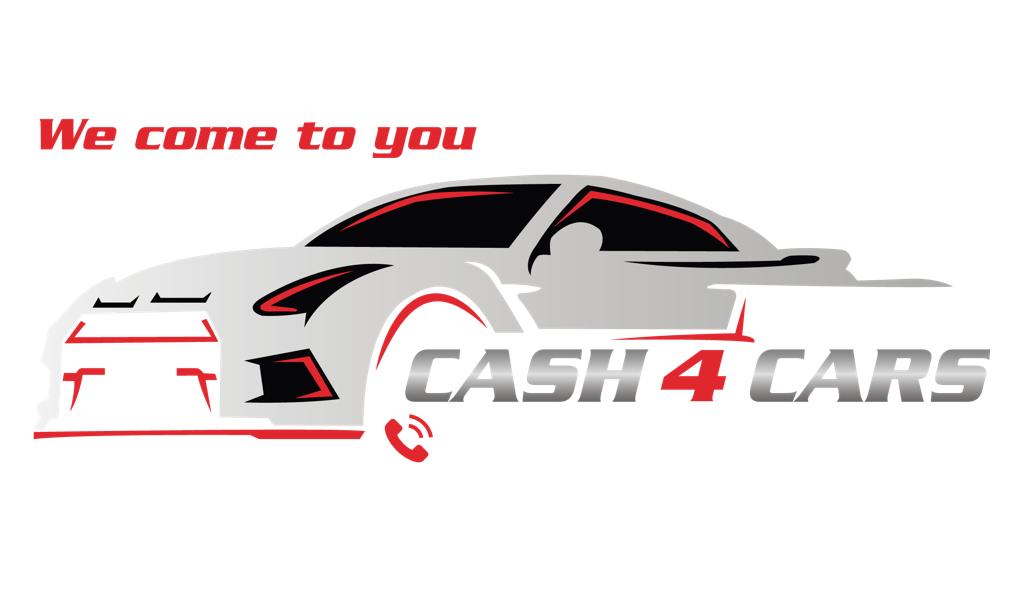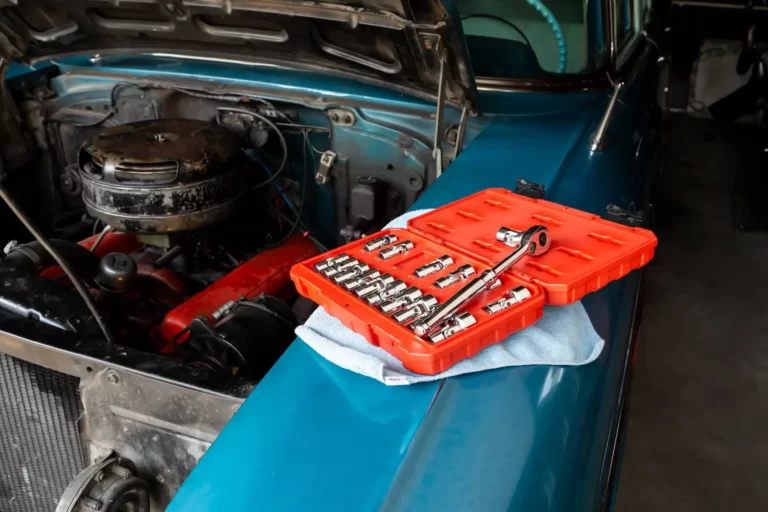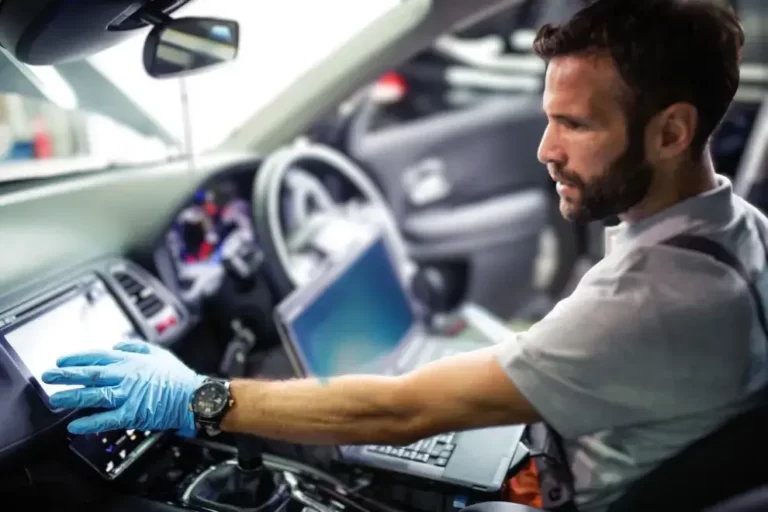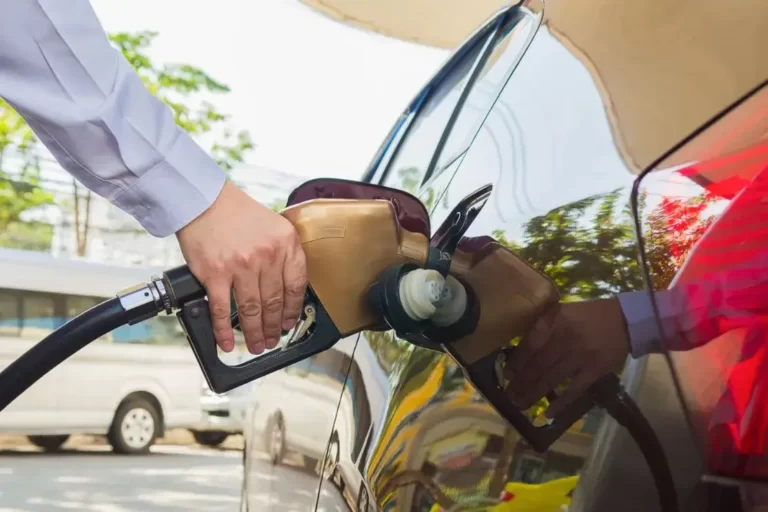Common Myths About Car Wrecking Debunked
Did you know that 50% of auto wreckers in Perth also recycle and resell auto parts, contributing to a more sustainable and cost-effective automotive industry? Despite the common misconceptions about car wrecking, the reality is that reputable auto wreckers play a crucial role in reducing waste, conserving resources, and providing affordable, high-quality vehicle components to both businesses and consumers.
In this article, we’ll explore the most prevalent myths surrounding car wrecking and debunk them with the facts, shedding light on the important environmental, economic, and practical benefits of this often-misunderstood industry.
Key Takeaways
- Car wreckers are instrumental in reducing waste and conserving resources by recycling auto parts.
- Recycled auto parts, including EV batteries, are becoming increasingly popular and cost-effective.
- Reputable auto wreckers adhere to strict safety and environmental regulations.
- Selling and purchasing recycled auto parts can be mutually beneficial for both parties.
- The vehicle recycling industry has evolved to become more efficient and sustainable over time.
Introduction to the Myths Surrounding Car Wrecking
The car wrecking industry is often shrouded in misconceptions and myths that can create a distorted perception of its practices and importance. However, understanding the truth behind these misconceptions is crucial for both consumers and industry stakeholders. In this section, we will explore the common myths surrounding vehicle recycling and highlight the importance of recognizing the realities of the car wrecking process.
Debunking the Misconceptions About Vehicle Recycling
One of the prevalent myths about car wrecking is that it is not an environmentally friendly practice. In reality, the automotive recycling industry plays a vital role in reducing waste and conserving natural resources. Through the recovery and reuse of materials, car wreckers contribute significantly to the circular economy, minimizing the environmental impact of the automotive industry.
The Importance of Understanding the Truth Behind Car Wrecking
By dispelling the myths surrounding car wrecking, consumers and industry stakeholders can gain a deeper appreciation for the value and significance of this industry. Understanding the truth behind car wrecking can lead to more informed decision-making, responsible consumption of automotive parts, and a greater commitment to sustainable practices within the automotive ecosystem.
“The car wrecking industry is often misunderstood, but its role in promoting sustainability and resource conservation is undeniable. By shedding light on the myths, we can foster a more informed and responsible approach to vehicle recycling.”
Through the exploration of these common misconceptions and the importance of understanding the realities of car wrecking, this section sets the stage for a comprehensive examination of the various aspects of the industry, including its environmental impact, economic viability, and the quality of recycled automotive parts.
Myth 1: Car Wrecking is Not Environmentally Friendly
One of the most prevalent myths about car wrecking is that it is not an eco-friendly practice. However, this could not be further from the truth. Car wreckers play a crucial role in reducing waste and conserving natural resources by ensuring that as much of a vehicle as possible is recycled and reused.
The Role of Car Wreckers in Reducing Waste and Resource Conservation
Car wreckers work tirelessly to recycle and repurpose various materials from vehicles, including metal parts, plastics, glass, and even electric vehicle (EV) batteries. By repurposing these materials, car wreckers help to minimize the demand for new raw materials, thus contributing to a more sustainable future.
The Importance of Recycling Electric Vehicle (EV) Batteries
As the popularity of electric vehicles continues to grow, the importance of recycling EV batteries has become increasingly crucial. Car wreckers play a vital role in ensuring that these valuable resources are properly handled and recycled, preventing them from ending up in landfills and contributing to environmental pollution.
Contrary to the myth that car wrecking is not environmentally friendly, the industry plays a significant part in reducing waste and conserving natural resources. By recycling and repurposing vehicle components, car wreckers help to promote a more sustainable future, making an invaluable contribution to the circular economy.
| Statistic | Value |
|---|---|
| Percentage of a car that can be recycled or reused when scrapped | Up to 95% |
| Percentage of car materials typically recycled during the scrapping process | Significant |
“Reputable car wreckers ensure that as much of a vehicle as possible is recycled and reused, minimizing waste and promoting sustainability.”
Myth 2: Only Metal Parts of a Vehicle Can Be Recycled
One of the common misconceptions surrounding car wrecking is the belief that only the metal parts of a vehicle can be recycled. In reality, car wreckers are capable of recycling a wide array of automotive materials, including plastics, glass, and even electric vehicle (EV) batteries.
By meticulously separating and processing these components, car wreckers ensure that as much of the vehicle as possible is reused, reducing waste and supporting the circular economy. This process not only benefits the environment but also contributes to the recyclable automotive materials that are in high demand.
- Car recycling can save over 2,500 pounds of iron ore, 1,000 pounds of coal, and 500 pounds of limestone by recycling just one car.
- Lead-acid car batteries are commonly recycled, with lead and other components being recovered for reuse.
- Car recycling conserves energy and reduces greenhouse gas emissions when compared to producing new materials from scratch.
The automotive recycling industry is tasked with reusing, recycling, or recovering 95% of a vehicle’s weight, making cars one of the most effectively recycled consumer products. This demonstrates the industry’s commitment to the myth that only metal parts of a vehicle can be recycled and its ability to adapt to the changing composition of modern vehicles.
“Recycling one car can save significant amounts of natural resources such as iron ore, coal, and limestone, highlighting the impact of car recycling on resource conservation.”
By debunking the myth that only metal parts of a vehicle can be recycled, car wreckers are showcasing the versatility and environmental benefits of their industry. This understanding is crucial for consumers to make informed decisions and support the recyclable automotive materials that are crucial for a sustainable future.
Common Myths About Car Wrecking Debunked
Contrary to the common myth, the car wrecking industry is not limited to just recycling metal parts. In fact, the truth is that a wide range of automotive materials can be repurposed and reused, contributing to a more sustainable and eco-friendly approach to vehicle disposal.
From plastics and rubbers to electronic components and even EV batteries, modern car wrecking services in Australia have developed sophisticated processes to ensure the responsible recycling of these diverse materials. By breaking down vehicles and segregating the various components, car wreckers can maximize the recovery and reuse of valuable resources, reducing waste and conserving natural resources.
The Cost-Effectiveness of Recycled Auto Parts
Another prevalent myth surrounding car wrecking is the belief that recycled auto parts are not cost-effective. However, the truth paints a different picture. Reputable car wreckers, such as the Oriental Car Removal in Perth, offer a wide range of high-quality recycled parts at a fraction of the cost of new replacements.
These cost savings can be particularly beneficial for car owners, who may face unexpected repair bills. By opting for recycled parts, customers can enjoy significant cost savings without compromising on quality or reliability. Additionally, the use of recycled parts supports the circular economy, promoting resource conservation and reducing the environmental impact of the automotive industry.
“The truth is, car wrecking is not just about scrapping metal – it’s about responsible recycling and reuse of a wide range of automotive materials, from plastics to electronics. This not only benefits the environment but also offers cost-effective solutions for car owners.”
By understanding the truth about recycling various automotive materials and the cost-effectiveness of recycled auto parts, car owners and the wider community can make informed decisions that contribute to a more sustainable future.
Myth 3: Vehicle Recycling is Not Economically Viable
The belief that vehicle recycling is not a profitable industry is another common misconception. In reality, the growing demand for recycled auto parts is a testament to the economic viability of this sector. As more people recognize the cost savings and quality of these components, car wreckers are finding that selling recycled parts and batteries can be a lucrative business.
The Growing Demand for Recycled Auto Parts
The automotive industry is increasingly focusing on ethical sourcing and sustainability, driving the demand for recycled auto parts. With the rise of electric vehicles, the need for high-quality, cost-effective batteries and components is greater than ever. For example, electric vehicle batteries can weigh up to 500 kilograms, significantly impacting tire life and vehicle performance. Recycled parts offer a more affordable solution, with Tesla and Audi battery replacement costs around $15,000 after 10 years of use.
The Profitability of Selling Recycled Parts and Batteries
The profitability of selling recycled parts and batteries is a key factor in the economic viability of vehicle recycling. As lithium-ion battery costs have decreased by an average of 7% per year over the last 20 years, the industry has found ways to maximize the value of these components. Used Teslas, for instance, have held their value well, with limited data suggesting they retain prices similar to other luxury cars. This demonstrates the potential for car wreckers to profit from the sale of recycled electric vehicle parts and batteries.
“The growing demand for recycled auto parts is a testament to the economic viability of the vehicle recycling sector.”
In conclusion, the myth that vehicle recycling is not economically viable is simply not true. The industry is thriving, driven by the increasing need for sustainable and cost-effective automotive solutions. By tapping into the growing demand for recycled parts and batteries, car wreckers can capitalize on the profitability of this sector and contribute to a more circular economy.
Myth 4: Recycling Old Vehicles is Complex and Inconvenient
One of the common misconceptions surrounding car wrecking is the idea that recycling old vehicles is a complex and inconvenient process. However, the truth is that reputable car wrecking services in Cranbourne, VIC have streamlined their operations to make the experience as hassle-free as possible for customers.
The Streamlined Process of Car Wrecking Services
Modern car wrecking companies understand the importance of providing a seamless experience for customers who want to sell their unwanted vehicles. Many offer free vehicle pick-up services, eliminating the need for customers to transport the car themselves. Additionally, they often provide on-the-spot payment, either through electronic funds transfer (EFT) or a cheque, ensuring a fast and convenient transaction.
The Hassle-Free Experience for Customers
The car wrecking industry has designed its processes to be as efficient and user-friendly as possible. Customers who choose to recycle their old vehicles can expect a seamless and hassle-free experience, from the initial contact to the final payment. This streamlined approach has helped to debunk the myth that vehicle recycling is complex and inconvenient, making it an attractive option for those looking to responsibly dispose of their unwanted cars.
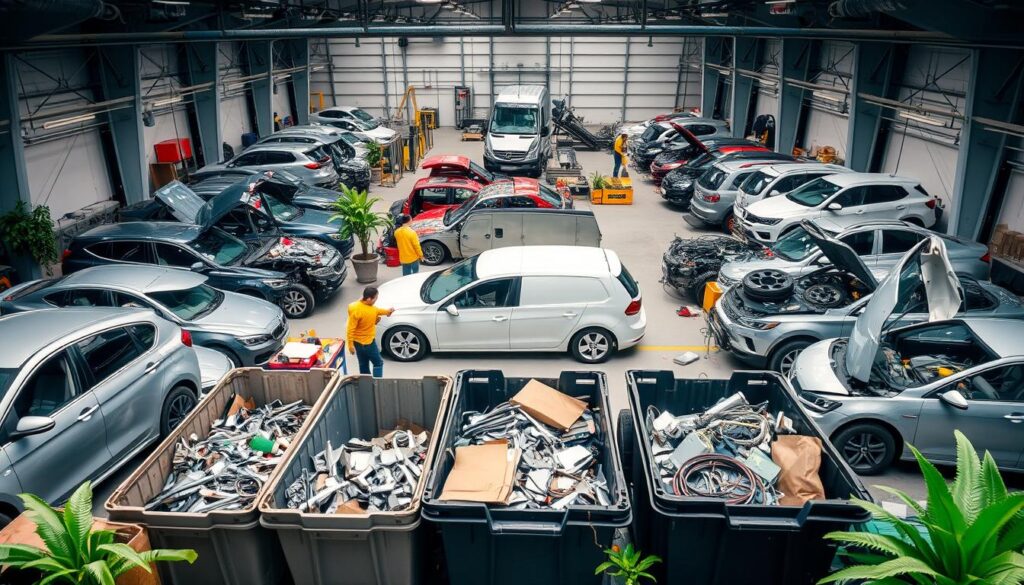
“The car wrecking industry has come a long way in recent years, making the process of recycling old vehicles more efficient and convenient than ever before.”
Myth 5: Recycled Auto Parts are of Lower Quality
A common misconception is that recycled auto parts are of lower quality compared to new parts. This myth can deter people from considering the benefits of choosing recycled components. However, the reality is quite different. Reputable car wreckers, like MMM Auto Centre, carefully inspect, test, and refurbish parts before offering them for sale or export.
These recyclers go through a rigorous process to ensure the parts they sell meet or exceed quality standards. They verify the compatibility of each component through cross-referencing part numbers and specifications, guaranteeing a perfect fit. Moreover, many car wreckers offer warranties on their recycled parts, providing customers with the same peace of mind as purchasing new components.
Purchasing second-hand car parts not only contributes to recycling and reusing efforts in the automotive industry but also offers significant cost savings. Salvaged parts often cost significantly less than new ones, sometimes up to 50% or more. This price difference can be influenced by factors such as part condition, rarity, and demand, as well as global conditions like the ongoing chip shortage.
Contrary to the myth that recycled auto parts are of lower quality, reputable salvage yards follow strict industry standards and guidelines for inspecting, cleaning, and refurbishing parts to ensure they are safe and reliable. Many of these parts are sourced from relatively new vehicles that still have perfectly functional components, making them an attractive and cost-effective option for savvy consumers.
“Purchasing recycled parts from a trusted car wrecker is a smart and sustainable choice. You can find high-quality components at a fraction of the cost of new parts, all while contributing to the circular economy.”
By understanding the rigorous testing and quality standards for recycled parts, as well as the warranty on recycled parts offered by reputable car wreckers, consumers can make informed decisions and confidently choose recycled components without compromising on quality or performance.
Myth 6: Vehicle Recycling is a New and Unproven Industry
Contrary to popular belief, vehicle recycling is not a new or unproven industry. The practice of recycling automobiles has been in existence for decades, steadily evolving and becoming more efficient over time. This industry has established robust systems for recycling a wide range of automotive components, leveraging advancements in technology and growing awareness of environmental and economic benefits.
The Evolution and Advancements in Vehicle Recycling
Vehicle recycling has a long history, with the first organized efforts dating back to the early 20th century. Over the years, the industry has undergone significant advancements, driven by the need for sustainable waste management and the recognition of the value in reusing automotive materials. Today, the vehicle recycling industry is at the forefront of innovation, employing advanced technologies and streamlined processes to maximize the recovery and reuse of a wide range of components, from metal parts to EV batteries.
The Robust Systems for Recycling Various Automotive Components
The vehicle recycling industry has developed comprehensive systems to handle the recycling of various automotive components. These systems involve the collection, dismantling, and processing of vehicles, ensuring that as much material as possible is recovered and repurposed. The industry has made significant strides in developing efficient methods for recycling everything from metal parts to plastics, rubber, and even advanced materials like those found in electric vehicles.
| Automotive Component | Recycling Rate |
|---|---|
| Steel | Over 90% |
| Aluminum | Around 90% |
| Plastics | 60-80% |
| Rubber | 50-70% |
| EV Batteries | Up to 95% |
The vehicle recycling industry has evolved to become a crucial part of the circular economy, contributing to environmental sustainability and resource conservation. Through its robust systems and ongoing advancements, the industry continues to prove that it is neither new nor unproven, but rather an integral component of the automotive industry’s journey towards a more sustainable future.
Myth 7: Recycled Vehicle Parts Do Not Contribute to the Circular Economy
One common misconception surrounding the automotive recycling industry is the idea that recycled vehicle parts do not contribute to the circular economy. However, this couldn’t be further from the truth. Vehicle recycling plays a vital role in the circular economy, reducing waste, conserving natural resources, and promoting renewable energy solutions.
The Role of Vehicle Recycling in the Circular Economy
By recycling car parts and other automotive components, the industry actively reduces the need for new, raw materials. This process helps to close the loop, as recycled materials are reintroduced into the manufacturing process, minimizing resource depletion and waste generation. The role of vehicle recycling in the circular economy is crucial, as it supports a more sustainable and efficient use of resources.
The Promotion of Renewable Energy and Resource Conservation
In addition to its circular economy benefits, vehicle recycling also promotes renewable energy and resource conservation. Through the recycling of materials like metals, plastics, and batteries, the industry contributes to the conservation of finite natural resources, while also enabling the reuse of valuable components, such as those found in electric vehicles (EVs). This not only supports the transition to a more sustainable future but also helps to mitigate the environmental impact of the automotive industry.
Contrary to the myth that recycled vehicle parts do not contribute to the circular economy, the reality is that vehicle recycling is a crucial element in building a more circular and sustainable economy. By embracing this industry, we can work towards a future where resources are utilized more efficiently, waste is minimized, and the environmental impact of the automotive sector is significantly reduced.
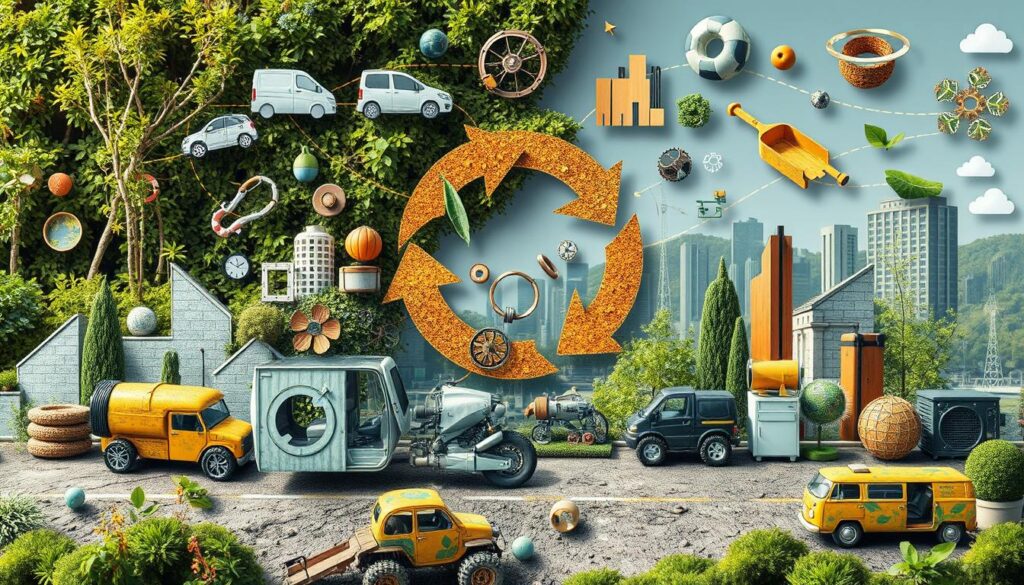
Conclusion
In conclusion, this article has aimed to debunk the most common myths surrounding car wrecking and vehicle recycling. By understanding the truth behind these misconceptions, readers can make informed decisions about car disposal and part purchasing, while also recognizing the significant environmental and economic benefits of the car wrecking industry.
From the role of car wreckers in reducing waste and conserving resources to the cost-effectiveness and quality of recycled auto parts, this article has provided a comprehensive overview of the realities of vehicle recycling. As the industry continues to evolve and become more sustainable, it is essential for consumers to recognize the positive impact that car wreckers can have on the circular economy and the environment.
By dispelling the myths surrounding car wrecking, this article empowers readers to make more responsible and eco-conscious choices when it comes to disposing of their vehicles and sourcing replacement parts. The car wrecking industry plays a vital role in promoting sustainability, reducing landfill waste, and preserving natural resources – all while offering cost-effective and reliable solutions for vehicle owners. As the demand for recycled parts and sustainable practices continues to grow, it is clear that the car wrecking industry is an essential component of the circular economy and a crucial contributor to a greener future.
